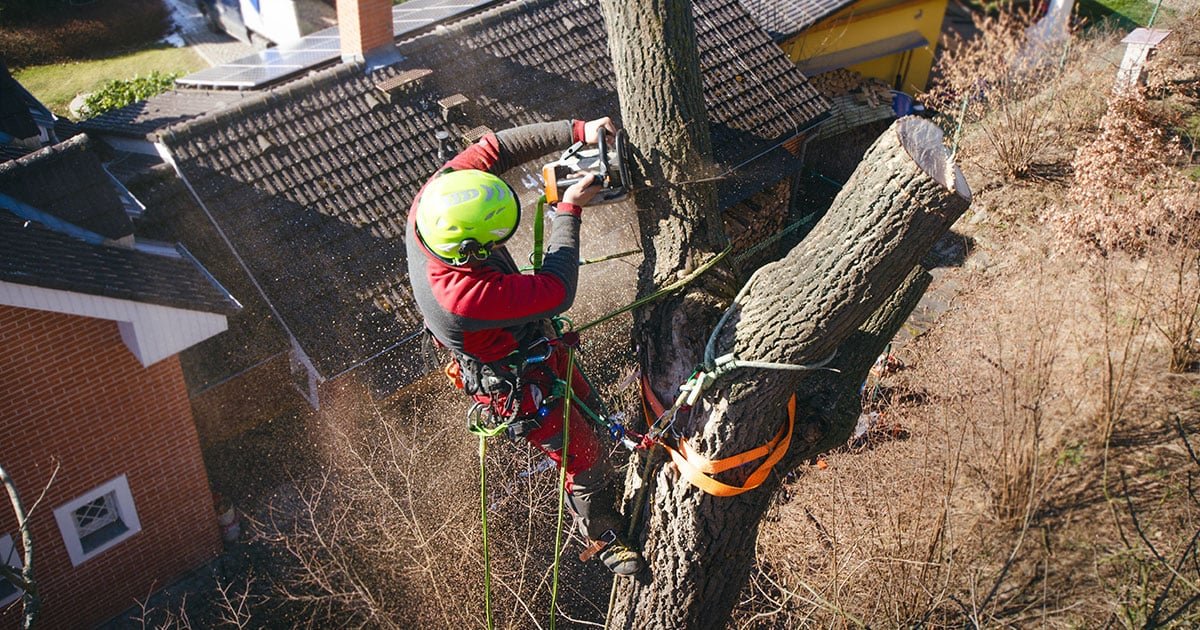Top Signs Your Tree Needs Trimming: Identifying Hazards, Health Issues, and Aesthetic Concerns
Learn how to recognize the signs that indicate your tree is in need of trimming, including overgrown branches, dead or diseased limbs, and structural weaknesses. Discover why regular tree trimming is essential for maintaining tree health and safety.
Regular tree trimming is essential for maintaining the health, safety, and appearance of your trees. In this blog post, we'll discuss the top signs that indicate your tree is in need of trimming, helping you identify potential hazards, health issues, and aesthetic concerns. We'll explore signs such as overgrown branches that pose a risk of property damage or injury, dead or diseased limbs that compromise tree health, and structural weaknesses that may lead to tree failure during storms or high winds. By learning to recognize these signs early on, you can take proactive measures to address them through timely tree trimming, promoting the longevity and vitality of your trees while enhancing the safety and beauty of your landscape.
Tree trimming is an essential aspect of tree care that helps maintain the health, safety, and appearance of your trees and landscape. By recognizing the signs that indicate your tree is in need of trimming, you can address potential hazards, health issues, and aesthetic concerns before they escalate into more significant problems.
Signs Your Tree Needs Trimming
Several signs indicate that your tree may be in need of trimming:
Overgrown Branches: Branches that extend beyond the tree's canopy or into neighboring structures pose a risk of property damage or injury and should be trimmed.
Dead or Diseased Limbs: Dead or diseased limbs detract from the tree's appearance and can spread disease to other parts of the tree if left untreated.
Structural Weaknesses: Weak or poorly attached branches, multiple trunks, or excessive leaning indicate structural weaknesses that may lead to branch or tree failure during storms or high winds.
Reduced Sunlight Penetration: Dense foliage that blocks sunlight from reaching the tree's interior can inhibit healthy growth and promote disease and pest infestation.
Benefits of Regular Tree Trimming
Regular tree trimming offers numerous benefits, including:
Improving Tree Health: Removing dead, diseased, or overgrown branches promotes healthy regrowth and reduces the risk of disease and pest infestation.
Enhancing Safety: Trimming away hazardous branches reduces the risk of property damage, personal injury, and tree failure during storms or adverse weather conditions.
Maintaining Aesthetic Appeal: Pruning to shape the tree's canopy and remove unsightly growth enhances the tree's appearance and improves the overall aesthetic of your landscape.
When to Schedule Tree Trimming
The best time to schedule tree trimming depends on the specific needs of your trees and the prevailing weather conditions in your area. In general, tree trimming is best performed during the dormant season in late winter or early spring when trees are less susceptible to stress and disease transmission. However, certain situations may necessitate immediate trimming, such as removing hazardous branches or addressing structural weaknesses.
Benefits of Regular Tree Trimming
Regular tree trimming offers numerous benefits, including:
Improving Tree Health: Removing dead, diseased, or overgrown branches promotes healthy regrowth and reduces the risk of disease and pest infestation.
Enhancing Safety: Trimming away hazardous branches reduces the risk of property damage, personal injury, and tree failure during storms or adverse weather conditions.
Maintaining Aesthetic Appeal: Pruning to shape the tree's canopy and remove unsightly growth enhances the tree's appearance and improves the overall aesthetic of your landscape.
Conclusion
By recognizing the signs that indicate your tree is in need of trimming and scheduling regular tree maintenance as needed, you can ensure that your trees remain healthy, safe, and beautiful for years to come. Whether you're trimming to address safety hazards, promote tree health, or enhance the aesthetic appeal of your landscape, proactive tree trimming is an essential aspect of responsible tree care.
